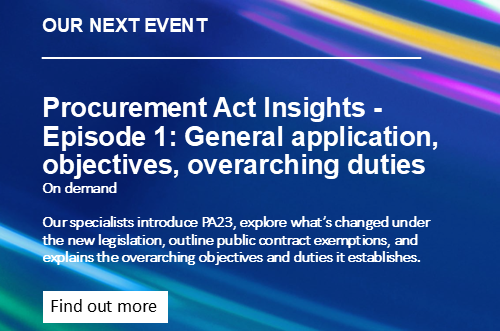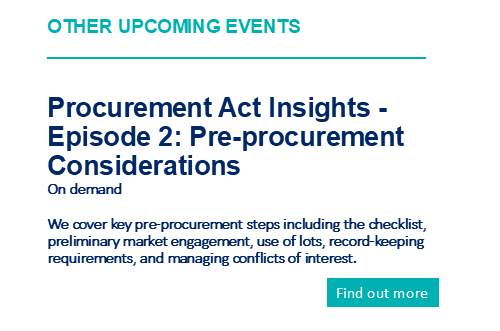- Details
Marcic reimagined
The scope for nuisance claims being brought against water companies has just been expanded and not necessarily clarified by the Supreme Court, says Steve Gummer.
Earlier this month, the Supreme Court issued a judgment in Manchester Ship Canal Company Ltd (Appellant) v United Utilities Water Ltd (Respondent) No 2 which has the potential to be a watershed moment for the sewerage industry. The decision somewhat erodes the statutory scheme in respect of claims for nuisance and other matters against water companies. The statutory regime exists for the purpose of balancing the interests of a water company’s impacted customers with the remainder of its customers, by entrusting enforcement of general duties to Ofwat as independent regulator. The decision in the UU case places a much greater premium on individual rights and narrows some of the previous understanding of Section 18(8) of the Water Industry Act 1991.
Facts
The case was a dispute between United Utilities (UU) and Manchester Ship Canal Company Limited (Manchester). Manchester is a statutory body that owns the beds and banks of the Manchester Ship Canal (Canal) pursuant to the Manchester Ship Canal Act 1885. UU is a water and sewerage company.
UU had been making a number of discharges of sewage into the Canal. This was the result of the system design. UU’s system of sewers (like many others) was a combined sewage and surface level water system. At times when the hydraulic capacity of the system was exceeded, discharge of some foul water could arise.
The case concerned whether such discharges could constitute nuisance or trespass and (whether impacted landowners) could make a claim for damages.
Key provisions of the Water Industry Act 1991 (WIA)
There are a lot of relevant parts of the WIA here. We set out a summary of the key parts below:
- Section 94 WIA sets out a general duty on water companies to provide a sewerage system including to provide, improve and extend a system of public sewers and to cleanse and maintain those sewers and to make provision for the emptying of those sewers.
- This general duty is supplemented by a number of other powers in the WIA as follows:
- Sections 98-101 WIA impose a conditional duty on water companies to provide a public sewer and connecting drains to be used for drainage for domestic purposes.
- Sections 102-105 WIA provide for the vesting in a water company of existing sewers, drains and sewage disposal works within its area.
- Sections 106-109 WIA provide for the connection of drains and private sewers with public sewers.
- Sections 111-114 WIA contain provisions designed to protect the sewerage system from uses which are likely to damage it or to cause a nuisance.
- Section 115 WIA provides for co-operation between sewerage undertakers and local authorities in relation to the draining of surface water from roads or streets.
- Section 116 WIA gives water companies the power to close or restrict the use of a public sewer, but only where it provides another sewer which is equally effective.
- Section 117 WIA makes it clear that the above powers do not confer any authority to construct or use sewers, drains or outfalls for the purpose of conveying foul water into canals or other watercourses without adequate treatment.
- Section 18 WIA (when read with Sections 19-23WIA) provide that Ofwat has the power to take enforcement action against a water company in breach of its obligations not least its obligation under Section 94 WIA. Enforcement can result in enforcement orders, fines and (at worst) a water company being replaced.
- Absolutely critically for this case, Section 18(8) provides a limitation on wider enforcement on statutory duties as follows (emphasis added):
“Where any act or omission–
(a) constitutes a contravention of a condition of an appointment under Chapter 1 of this
Part or of a condition of a licence under Chapter 1A of this Part or of a statutory or other
requirement enforceable under this section; or
(b) causes or contributes to a contravention of any such condition or requirement,
the only remedies for, or for causing or contributing to, that contravention (apart from those available by virtue of this section) shall be those for which express provision is made by or under any enactment and those that are available in respect of that act or omission otherwise than by virtue of its constituting, or causing or contributing to, such a contravention”.
The effect of Section 18(8) is to limit who can enforce the obligations of a water company to provide a sewerage network. However, Section 18(8) WIA also preserves any existing (i.e. those occurring notwithstanding the WIA) common law remedies which are available in respect of acts or omissions which constitute, or cause or contribute to, a breach of section 94(1). This may seem odd but the function is to ensure that enforcement of the obligation to construct a sewer network rests primarily with Ofwat.
Schedule 12 of the WIA provides a statutory compensation scheme for persons who have sustained damage by reason of the exercise by the water company, in relation to a matter as to which that person has not himself been in default, of any of its powers under the relevant sewerage provisions. However these relate to specific powers. They do not relate to Section 94 of the WIA. Breaches of Section 94 WIA are only enforceable by way of an enforcement order and only then can they be enforced by people impacted (by way of Section 22 WIA). Thie effectively replaces the common law regime.
Some key cases
The degree of exclusion of common law remedies for breach of a water companies’ statutory duties has been extensively litigated. Two of the critical cases are Marcic and Dobson. We set out summaries of both at a high level below:
Marcic v Thames Water (TW)
Marcic’s property was flooded with surface water when heavy rain caused a sewer to become overloaded. Surface water also entered a foul water sewer so that it also became overloaded, causing sewage to back up into Marcic’s property. This had been caused by TW’s network becoming inadequate to accommodate an increased volume of sewage and surface water as additional houses were built.
Marcic claimed for (amongst other things) damages. Citing Section 18(8) the House of Lords rejected this claim. The Supreme Court in this case outlined that the reason for the Marcic decision was that Marcic’s claim relied on an underlying point that TW was required to build and expand a wider sewerage system and had failed to do so. TW’s obligation arose purely as a result of the WIA – as such there was no remedy other than that under the WIA. Put more specifically, there was no cause of action in nuisance in the first place (absent the WIA), where the failure to construct a public sewer was an essential ingredient of a claim arises ONLY by virtue of a water company’s statutory obligations. Failure to construct new sewers was not (of itself) a nuisance.
Dobson v Thames Water (TW)
Here Dobson and others lived in the vicinity of a sewage treatment works. They complained that the sewers emitted foul odours and that these constituted a nuisance which had been caused by the negligence of TW. In response, TW argued that the Dobson was seeking to enforce TW’s duty under Section 94 WIA to make such provision as was necessary for effectually dealing with the contents of their sewers, and that such proceedings were precluded by Section 18 on the basis set out in Marcic.
The judge ruled against TW and found that TW was liable to local residents for its negligent failure to control odour from its sewerage facility but stated that a claim could arise if “negligence” were established. This case law was always quite confusing as it implied some heightened standard of negligence for nuisance – conflating two torts. The judgement appeared to hinge on a distinction between “policy” and “operational” matters. While TW was unsuccessful the case was still considered a helpful precedent for water companies as it appeared to set a higher bar to the law of nuisance claims.
Finding
The court in this case found against UU. They did this on the following grounds:
- The case law in Dobson appears to have been departed from when it comes to setting the bar re Section 18(8) WIA. There was no requirement of negligence for a claim of nuisance. The court stated that the fact that TW had operated a sewage treatment works and it caused nuisance (in the normal understanding of the term at common law) was sufficient. The sewage works were operating as intended and nuisance ensued.
- The case law in Marcic is preserved but distinguished. In this case the fact that the UU system was designed to discharge foul waste (at any time) into a watercourse was itself a nuisance (or capable of being one). The logical result of the system on its design and inception was a nuisance. In contrast in Marcic, this was not the case, the system designed was not designed to overflow or spill sewage on to resident’s property. This had only resulted as a failure by TW to build further sewers (this obligation only existed in the WIA).
- In addition the court found (somewhat less controversially) that there was no general statutory defence of discharging into a watercourse.
The consequences
The logic of the case is both sound and forensic but the result is potentially undesirable on policy grounds. The case indicates that the WIA is to be understood as creating a distinction between scenarios where:
- There is an involuntary escape of sewage from an outlet which was not planned or designed to emit sewage at all. In this scenario the sewage leak arises solely from the subsequent inadequate capacity of the sewerage system as a consequence of the increased usage of that system.
AND
- A circumstance of discharge of sewage from outlets or channels which were built for the purpose of carrying it away to a watercourse i.e. where the system is operating as envisaged and designed to operate, then the water company can be responsible under an action of nuisance.
Marcic has on occasion been interpreted as excluding claims whenever the optimal solution to a matter was the construction of additional infrastructure or where the underlying reason for the nuisance was the inadequacy of infrastructure i.e. a breach of the general duty of a water company. This position reflected the financing and funding arrangements of water companies who are funded in five yearly cycles following periodic reviews. It reflected a view that the circumstances in which new infrastructure should be provided is a matter for the regulators and not for the courts and that provision of new infrastructure was a decision to be taken to balance the needs of all customers.
It has always been the case that where an alternative course of action outside of the WIA existed then this remained actionable by individuals. However, where matters concerned the need for new infrastructure the boundaries for such actions have previously been understood to be relatively narrow.
However, the prior interpretation of Marcic has now been roundly dismissed. In terms of foul discharges where a system was constructed in contemplation that a foul discharge may arise it seems possible that a common law claim for nuisance is preserved. This is the case notwithstanding that the risk of this arising (and the impact and reach of the nuisance) has been materially exacerbated due to failure to develop the sewerage network (i.e. breach of the general duty).
The UU case seems to hinge on how likely/in contemplation/reasonably foreseeable nuisance was with the system operating as originally intended. This is a relatively simple rule to apply in the case of a foul discharge to a watercourse but may well be more nuanced with other infrastructure. The distinction is a fine one and we can expect a great deal more case law on whether a nuisance is continuing in respect of impacted stakeholders suffering from foul discharges going forwards.
Steve Gummer is a Partner at Sharpe Pritchard LLP.
For further insight and resources on local government legal issues from Sharpe Pritchard, please visit the SharpeEdge page by clicking on the banner below.
This video is for general awareness only and does not constitute legal or professional advice. The law may have changed since this page was first published. If you would like further advice and assistance in relation to any issue raised in this article, please contact us by telephone or email
|
Click here to view our archived articles or search below.
|
|
ABOUT SHARPE PRITCHARD
We are a national firm of public law specialists, serving local authorities, other public sector organisations and registered social landlords, as well as commercial clients and the third sector. Our team advises on a wide range of public law matters, spanning electoral law, procurement, construction, infrastructure, data protection and information law, planning and dispute resolution, to name a few key specialisms. All public sector organisations have a route to instruct us through the various frameworks we are appointed to. To find out more about our services, please click here.
|
|
OUR RECENT ARTICLES
December 10, 2025
Sharpe Pritchard appointed to £60m London Boroughs’ Legal Alliance frameworkSharpe Pritchard, one of the UK’s leading public law firms, has been re-appointed to the London Boroughs’ Legal Alliance (LBLA) Solicitors Panel.
November 20, 2025
Strengthening the standards and conduct framework for local authorities in EnglandJames Berry offers his insight into how the proposed changes to standards and conduct rules will affect local authorities.
November 04, 2025
Procuring and operating open frameworks under the Procurement Act 2023Chantelle Pink offers advice to authorities on open frameworks and how to procure them.
October 31, 2025
Building Solar – 5 Top Tips for Solar Farm Construction ContractsSolar farm construction contracts are in focus following fascinating insights into the continuing global uptake and expansion of renewables, and particularly solar, within the 2025 mid-year report of Ember, a global energy think tank.
|
|
OUR KEY LOCAL GOVERNMENT CONTACTS
|
||
|
Partner 020 7406 4600 Find out more |
||
|
Partner 020 7406 4600 Find out more |
||
|
Rachel Murray-Smith Partner 020 7406 4600 Find out more |







 Catherine Newman
Catherine Newman
